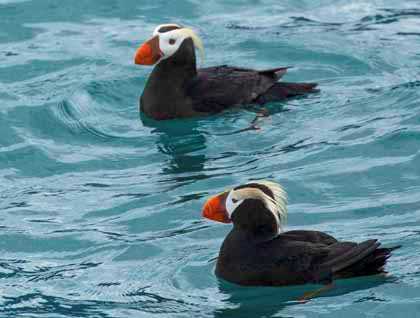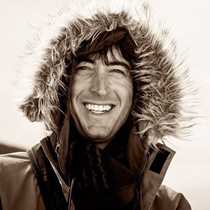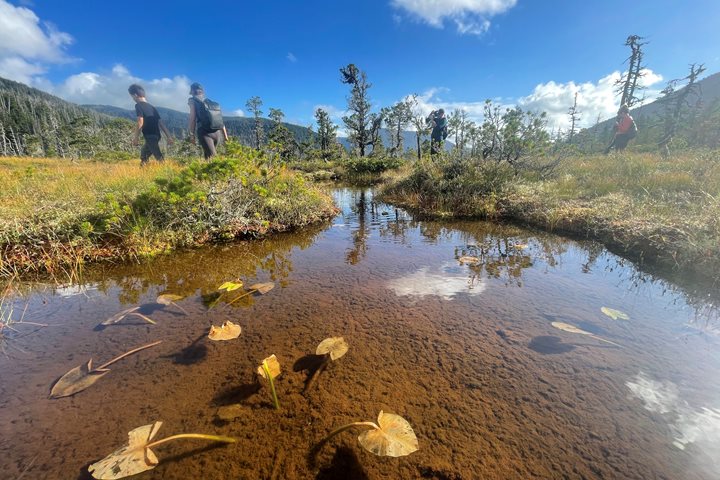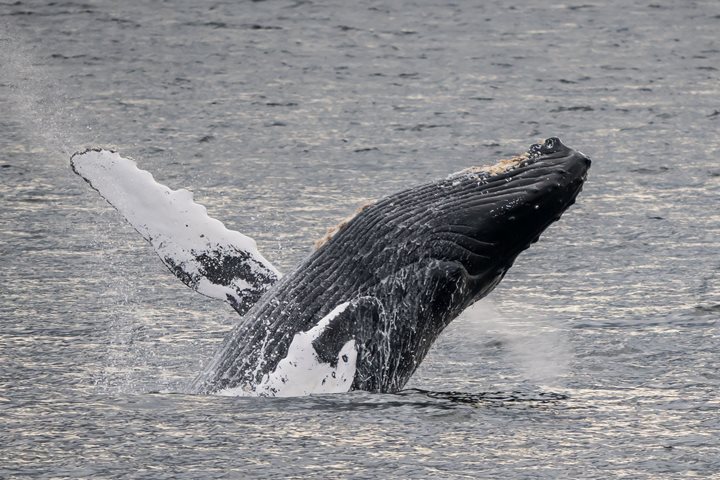Today has been another exciting day spending time in the pristine wilderness of Glacier Bay National Park. We picked up our park ranger and our Native American cultural interpreter early in the morning, and headed north up the bay.
After breakfast, we all got great looks at tufted and horned puffins at South Marble Island. They flew around us and dove underwater for food. Some of them came close enough for us to take nice photographs. This little island and the few nearby islets offer a perfect habitat for nesting puffins, as well as hundreds of black-legged kittiwakes. Furthermore, the experience is complimented with more than 200 growling Stellar sea lions, and a variety of other sea birds like common murres, pelagic cormorants, marbled murrelets, and pigeon guillemots. It was a very exciting start to our day.
We moved on and found mountain goats at the famous Gloomy Knob. It’s not known for its good weather, but it does often give us great looks at wildlife. There we watched 5 mountain goats feed and move across the precipitous slope.
We then arrived to the calving face of the Johns Hopkins Glacier, with spires rising 250 feet from the ocean surface, crashing down like a demolition. The native people here used to call it white thunder, which we can all agree is an accurate description for the immense crack that echoes from a gigantic collapse. Some of the pieces crashing down were larger than a 20-story building. The waves were big enough to rock our ship, and we all savored the time with bits of laughter, admiration, and awe.
On our way out of Glacier Bay, we took a look into Geikie Inlet, and found a pod of Killer Whales. We gave them a respectful distance and watched them swimming near the shore, likely feeding on salmon. Judging by their dorsal fins and behavior, they were resident killer whales, who feed only on fish – mainly salmon this time of year (like us tonight, onboard the National Geographic Sea Lion).







